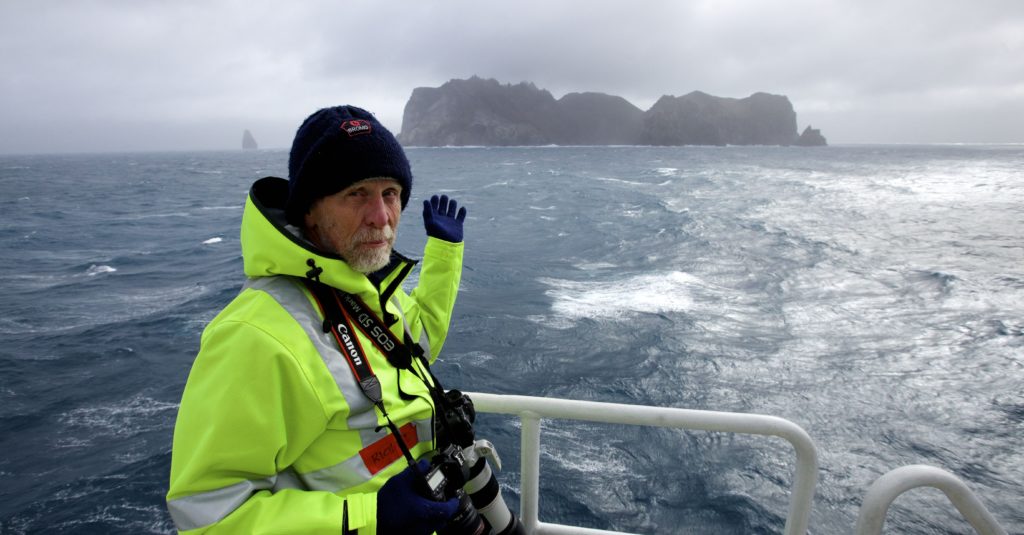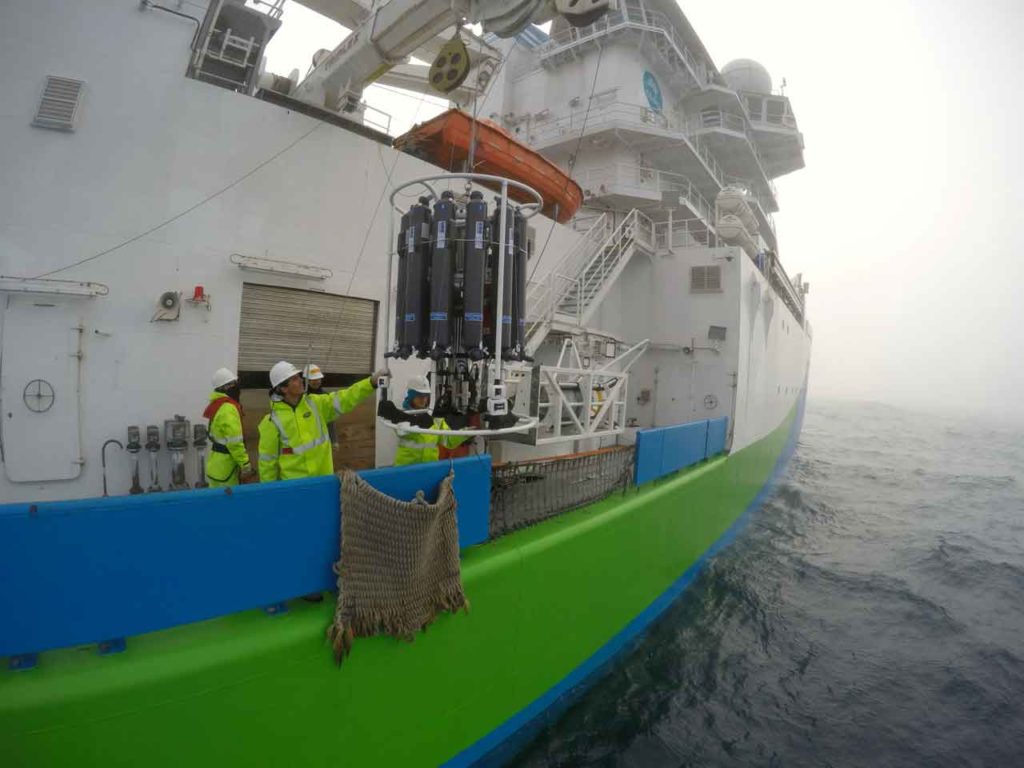Now on the second phase of their research program, the RV Investigator team have reached Heard Island and are now analysing hydrothermal systems.

McDonald Island (right) and Meyer Rock (left) from RV Investigator on 24 January 2016, with Prof Richard Arculus in the foreground. Credit: Pete Harmsen.
By Chief Scientist Mike Coffin
This week marked our first sightings of the McDonald Islands and Heard Island, the foci of this voyage. During the first half of the week, we successfully completed the first phase of our research program, a 12-station biogeochemistry and physical oceanography transect extending from the Australia-Antarctic Basin across the deep western boundary current and Central Kerguelen Plateau to just north of Heard Island.
We then moved on to the second phase, intensive seafloor mapping that started with multiple circumnavigations of the McDonald Islands.
McDonald and Heard Islands are Australia’s only known active volcanoes, and due to their rather inaccessible locations, little is known about them geologically. Of the two, the McDonald Islands are the more inaccessible and perhaps dynamic. Their morphology has changed repeatedly between relatively infrequent observations from transiting ships, and the primary volcanic rock type – phonolite – differs markedly from the basalt that forms most of Heard Island. Totalling only 2.5 km2, the McDonald Islands sit on a significantly larger foundation, which is the focus of our seafloor mapping.
A key tool in our search for undersea hydrothermal systems associated with the McDonald and Heard Islands is the trace metal rosette, or TMR, which is deployed to recover water samples from specific depths in the ocean. The TMR collects seawater with minimal trace metal contamination for analyses in both shipboard and shore-based laboratories. Iron is the primary trace metal of interest in our research program.

The TMR being deployed over the side of RV Investigator. Credit: Pete Harmsen.
The demographics of our 60-strong ship’s complement came to the fore during three shipboard birthday celebrations over the past week. During our 58 days at sea, we will celebrate 12 birthdays. The average age of the entire ship’s complement is 41 (range 21-71), of the 13 PhD-level scientists 48 (range 32-67), of the 14 students 34 (range 24-52), and of the 11 science support staff 42 (range 21-71).
With respect to gender, of the 40 science/arts and science support staff, 40% (16) are female and 60% (24) are male. The balance of genders on this voyage is by far the closest to equality that I’ve experienced in 32 research voyages spanning five decades.
Australia Day coincides with the conclusion of this week’s report, and the able master and crew of RV Investigator bestowed Australiana upon everyone to start the day, decked out the galley with patriotic decorations, served traditional Australia Day fare for lunch and dinner, and even arranged a pre-dinner outdoor/indoor barbecue here at 5°C at 53°S! Although this is my fourth celebration of Australia Day in the vicinity of Heard and McDonald Islands, it is my first of this millennium, and a memorable one indeed.

